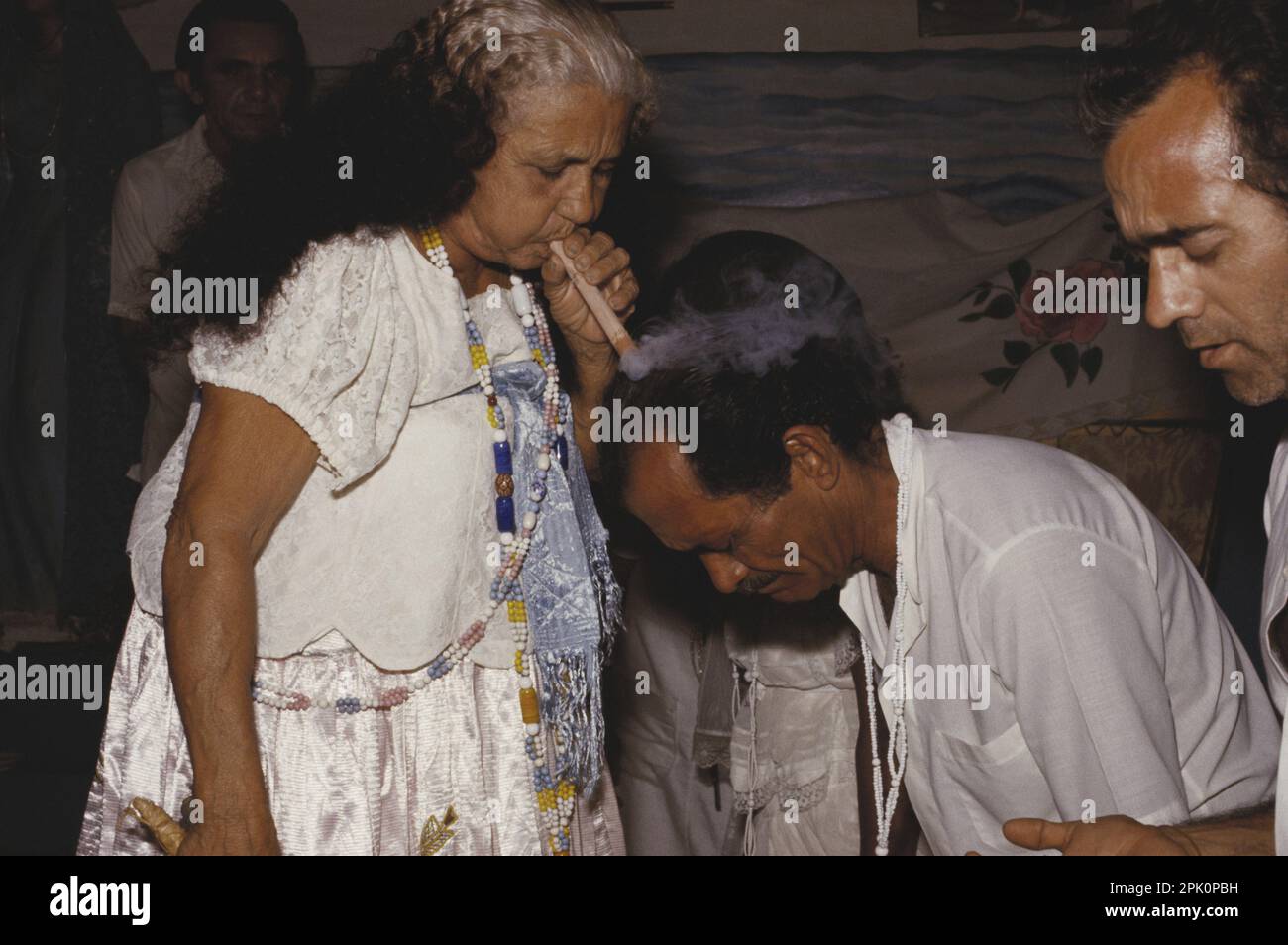Members of the Afro-Brazilian religious cult Tambor de Mina engaged in a healing ceremony (pagelança) derived from Amerindian shamanism. The Mãe de Santo is blowing cigar smoke on the head of a patient.

Image details
Contributor:
Jacques Jangoux / Alamy Stock PhotoImage ID:
2PK0PBHFile size:
50 MB (1.5 MB Compressed download)Releases:
Model - no | Property - noDo I need a release?Dimensions:
5125 x 3408 px | 43.4 x 28.9 cm | 17.1 x 11.4 inches | 300dpiMore information:
Tambor de Mina (popularly batuque) is a syncretic Afro-Brazilian spirit possession religion that developed among African slaves (with roots mostly in Benin and Nigeria) and their descendants in the State of Maranhão, incorporating elements from catholicism, from indigenous pagelância (shamanism), and from spiritism. Entities worshipped include Voduns and Orishás, Gentils, and The Orishá Exú (Yoruba) or Legba (Fon) has a distinct, however indispensable, cult. Tambor de Mina arrived in Belém (State of Pará) around 1890, brought by the "Mãe de Santo" (cult leader) Mãe Josinha who founded the terreiro "Dois Irmãos" in the Guamá neighborhood of Belém in 1890 (Mãe Doca, also from Maranhão, may have preceded her). Mãe Josinha was succeeded by Mãe Amelinha, who became a leading personality in Afro-Brasilian religions in Belém in the 20th century. Mãe Amelinha, in turn, was succeeded by her daughter Mãe Lulu and, since 2019, by her granddaughter Mãe Heloisa, the current cult leader (as of 2023). This picture: healing ceremony (pagelança) derived from Amerindian shamanism. The mãe de santo is blowing cigar smoke on the head of a patient, a practice derived from Amerindian shamanism n the terreiro (place of worship) "Dois Irmãos" in Belém. c. 1978.